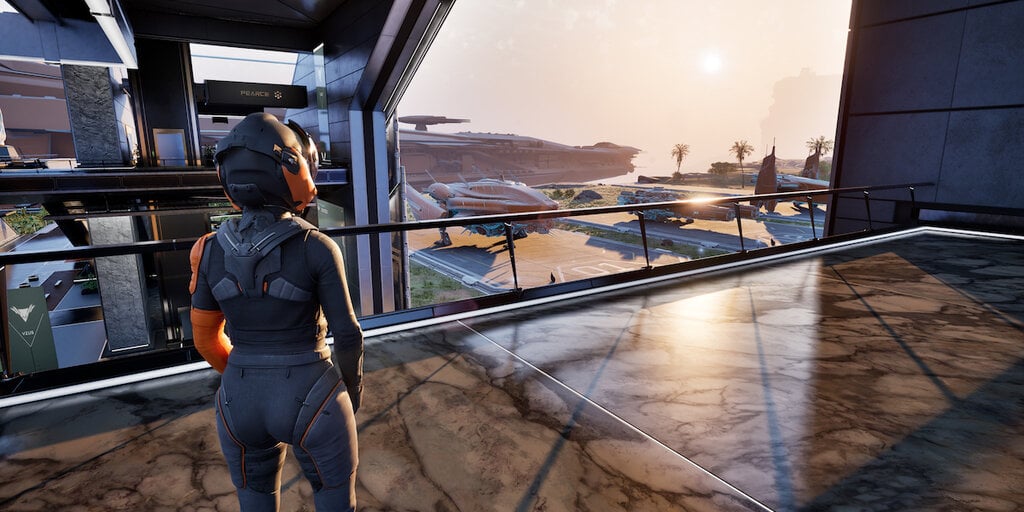ATMTA, the company behind the anticipated space-faring, Solana-based video game Star Atlas, is planning a 1,000-player online stress test to be launched on private servers Wednesday. The focus of the upcoming test, the company says, is to showcase Star Atlas’ high-density, immersive environments to users.
“This is the first demonstration of our MetaGravity integration,” ATMTA co-founder and CEO Michael Wagner told Decrypt in an interview. “Our goal is a stress test with real players in a single lobby in a single server instance, up to 1,000 people.”
Players who have an access code for the Epic Games Store early access version of the game can participate on Wednesday. Star Atlas has been handing out additional codes to some people who interact with its official Twitter account.
🚨 REMINDER 🚨
Tomorrow at 12PM ET / 5PM UTC, we’re hosting a stress test targeting a historic 1,000 concurrent players in a single lobby! 👊
Will you be there? pic.twitter.com/F5iJw6EJ9g
— Star Atlas (@staratlas) January 16, 2024
In July, ATMTA partnered with London-based online world developer MetaGravity to leverage its technology to improve Star Atlas’ physics and server infrastructure. Star Atlas is a massively multiplayer online (MMO) space game built around Solana NFTs and tokens, with a lavish persistent world planned
As the robust vision for Star Atlas continues to be built, the team has delivered smaller-scale experiences to engage users. SAGE Labs, a browser-based game from the developers of Star Atlas, accounted for 15% of all Solana traffic on October 8 last year, soon after launch.
Still in beta, Star Atlas was a highlight of the 2023 Solana PlayGG event in San Diego, CA, a free two-day gaming event hosted by the Solana Foundation. ATMTA showed off Star Atlas’ potential as an open-world video game at the event.
In an interview with Decrypt on Tuesday, Wagner differentiated MetaGravity’s approach from that of Improbable, the unicorn startup behind the MSquared metaverse platform, which powered the early playtests for the Bored Ape Yacht Club Otherside game world.
“Companies like Improbable use spatial partitioning, which is just a way to identify and reference objects that are in shared space,” Wagner said. “MetaGravity uses a technology and a new algorithm called causal partitioning.”
Large multiplayer games often divide the game world into smaller sections or “partitions” to manage network traffic and computational load more efficiently. Each partition can be processed separately, reducing the strain on servers.
Causal partitioning, Wagner explained, allows Star Atlas to have massive, single worlds that support many users simultaneously without performance degradation.
“What we’ve been able to demonstrate at Solana Play GG using network-connected bots was 5,000 concurrent users. And then at Solana Breakpoint this year, we showcased 30,000 concurrent users,” he said. “But those were just bots that were network-connecting. Now we’re doing it with real players.”
According to Wagner, ATMTA decided on 1,000 users to ensure stability and will use servers based in the United States. He acknowledged that international play will be exposed to lag during the test, but this is just an initial multiplayer test.
Looking to balance the expected 24-hour user turnout with ATMTA’s current infrastructure capacity, Wagner said predicting the maximum number of daily users is crucial, adding that hosting a 10,000-user test is unrealistic if only 500 to 1,000 people actually join.
Wagner said the test will look at performance metrics, including frames per second (FPS), latency across time zones, and the specs on the PCs used to play Star Atlas, collecting user feedback on their experience. The data, Wagner said, will be compiled by a third party.
After the stress test, Wagner said, the Star Atlas roadmap includes on-chain character progression, ship mastery, inventory management, hover racing, and full multiplayer support featuring Capture the Flag and Team Deathmatch modes.
Last summer, Wagner told Decrypt that despite ATMTA laying off 73% of its staff, the team is continuing on with its long-term mission to bring Star Atlas to life.
“Nothing about our vision has changed,” Wagner said then. “We’re only reprioritizing our efforts on those things that are more immediately repeatable, and we’re leveraging that as a way to grow the user base and generate revenue in a more substantial amount.”
Despite these setbacks and ATMTA losing $16 million in the collapse of FTX, Wagner said he is still bullish on the future of blockchain gaming on Solana.
“I’m still extremely bullish; we’ve never lost our positive sentiment around Solana even through 2023 with all the negativity surrounding it, following the FTX stuff,” Wagner said. “In terms of tech, we still think [Solana] is the most appropriate, most suitable, and most capable for scaling to a large user base with real-time on-chain transactions and game logic.”
Edited by Ryan Ozawa.
Stay on top of crypto news, get daily updates in your inbox.
Source: https://decrypt.co/213149/why-solana-mmo-star-atlas-is-hosting-a-1000-player-online-stress-test




